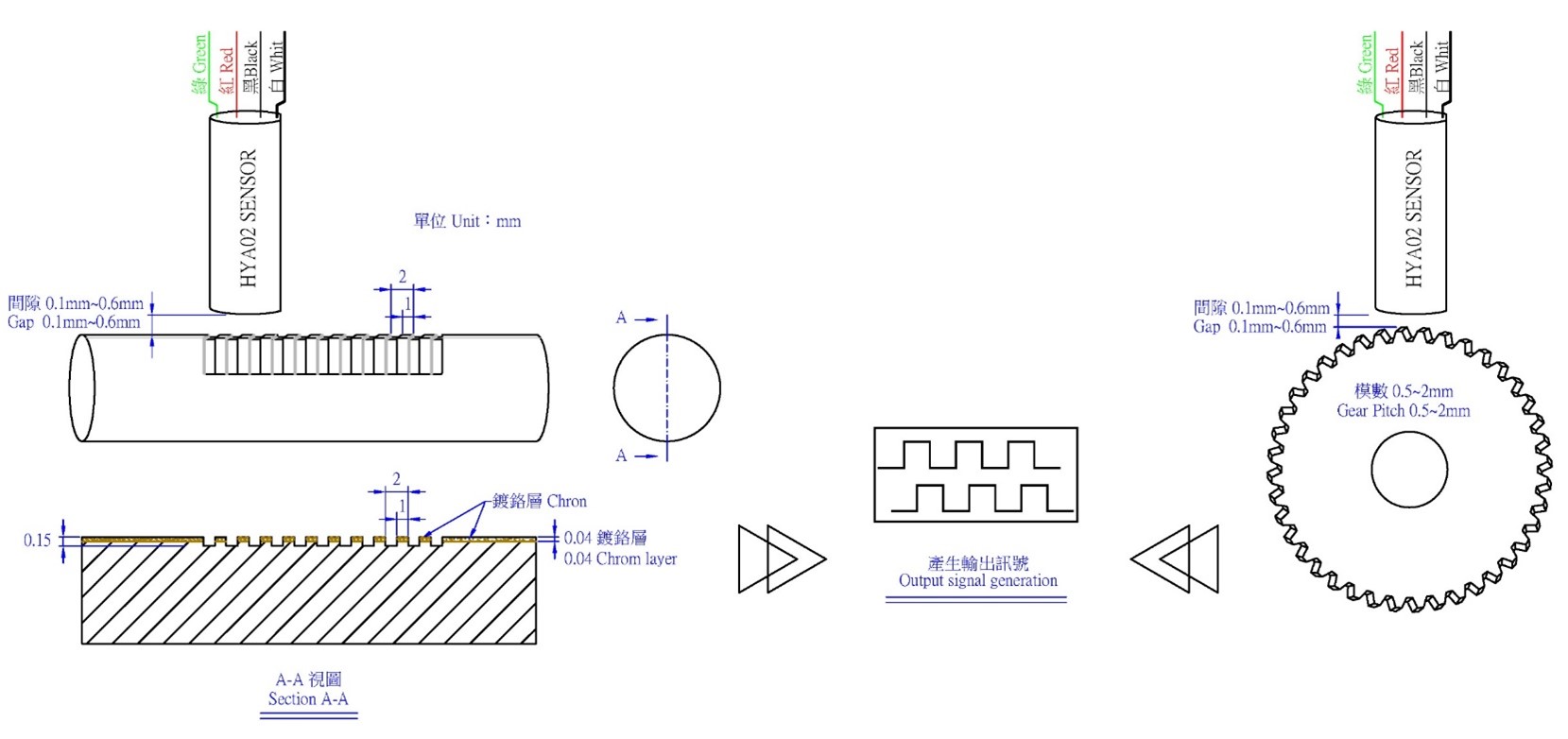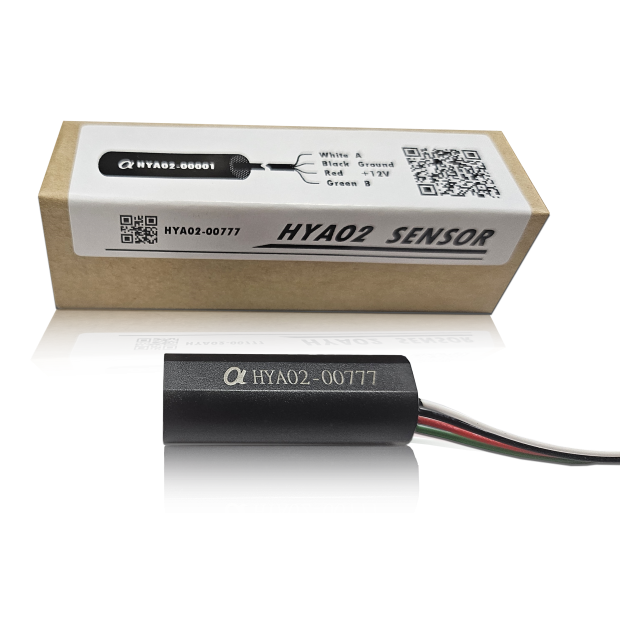Key Features
- Non-contact design: Eliminates mechanical wear, ensuring long lifespan and maintenance-free operation.
- Compact and easy to install: Ideal for equipment with limited space; installation gap ranges from 0.1 to 0.6 mm.
- High sensitivity: Detects even minimal changes in magnetic fields.
- Rapid response: Supports relative motion speeds up to 15 m/s with real-time signal output.
- Stable and robust: Engineered plastic housing resists environmental interference, ensuring reliable performance.
- High resolution: Standard resolution of 2 mm, upgradeable to 1 mm or 0.5 mm with external signal processing.
Technical Specifications
- Operating voltage:DC 12V
- Operating current:24mA
- Maximum linear speed:15m/s
- Output waveform: Dual-phase 90° phase-difference digital square wave (quadrature signal)
- Resolution: 2 mm (adjustable to 1 mm or 0.5 mm via controller)
- Operating temperature: -10°C to 85°C
- Sensing gap: Up to 0.6 mm
- Compatible gear module:0.5~2 mm
Advantages Comparison:
HYA02 SENSOR vs. Traditional Encoder/Linear Scale
| Item | HYA02 SENSOR | Traditional Encoder/Linear Scale |
|---|---|---|
| Price |
✅Low cost, highly economical
|
❌High cost, expensive to replace
|
| Installation Flexibility |
✅Easy installation, minimal space required
|
❌Requires precise alignment and ample space
|
| Durability |
✅Non-contact design, maintenance-free
|
❌Contact type or prone to dust interference
|
| Travel Distance |
✅Unlimited travel distance
|
❌Limited by fixed measuring range
|
| Application Flexibility |
✅Suitable for various automation equipment
|
❌Must be paired with specific drive/control systems
|
Installation & Usage Guidelines
- Align the sensing surface perpendicular to the gear tooth surface, maintaining a 0.1–0.6 mm gap.
- Avoid using sharp objects or screws for mounting; flat clamping is recommended to secure the sensor.
- The target object should have a height difference of at least 0.15 mm. Its surface must be smooth and may be coated with a non-magnetic material, such as chrome.
- Ensure proper alignment between the sensor and the target to maintain stable and accurate signal output.


